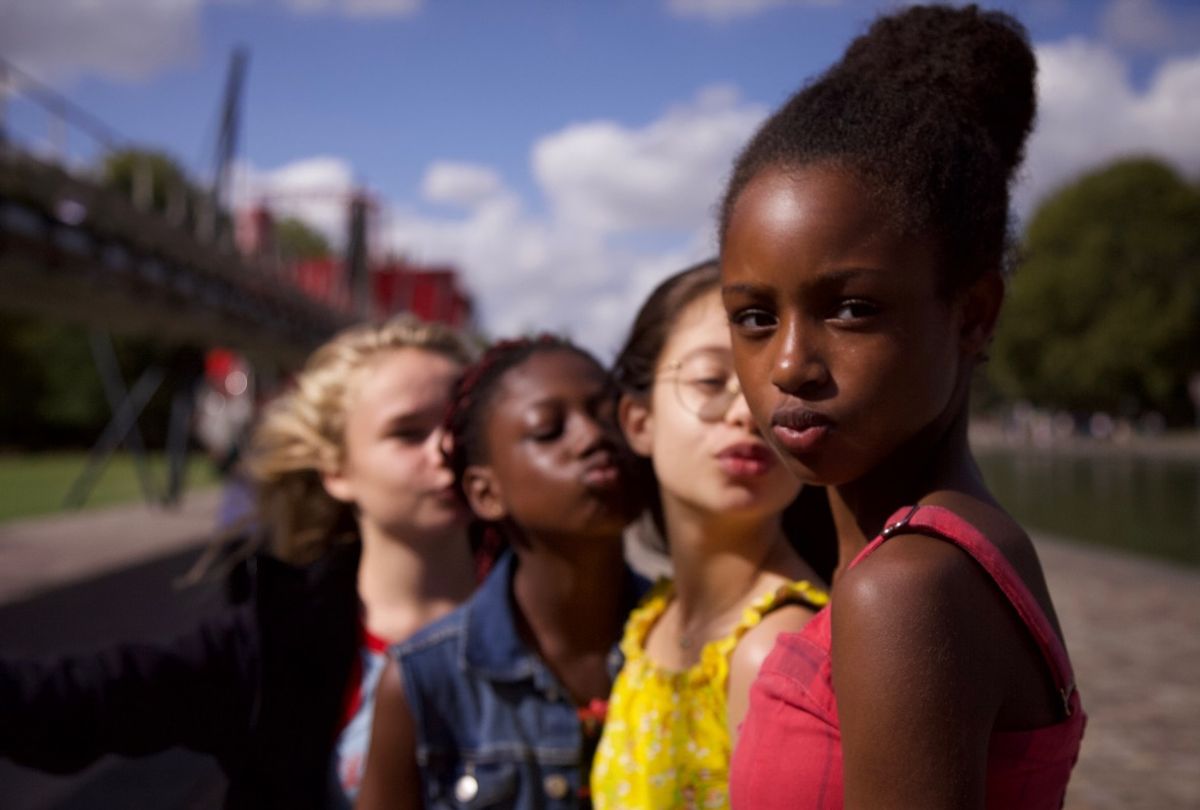You may be wondering what all the hoopla is surrounding Netflix's French film "Cuties." Those calling to censor "Cuties" and the backlash to #CancelNetflix for sticking by it, condemn the film for sexualizing girls while altogether missing the message of the movie — that it is a critical commentary on pornification. As a gender studies professor who has taught about these issues for many years, I am not surprised by the confusion surrounding "Cuties" because I know that it's hard to talk about the sexualization of culture (also called raunch culture) without offending somebody.
The film chronicles a few weeks in the life of Amy, an 11-year-old Senegalese immigrant living in Paris. Amy straddles two cultures in the story — a polygamous, conservative branch of Islam that advocates purity and submission in girls and women, and the secular culture of pornification and social media. Amy's father is traveling, we learn early in "Cuties," to bring home another wife. While Amy's mother publicly accepts this development as a "blessing," we find that in private she feels otherwise. In a tightly shot sequence filmed through Amy's eyes as she's hiding under her mother's bed, we hear her mother shed the public persona and quietly weep. Amy escapes the tension at home, and her misalignment with her religious instruction, by maneuvering to join a gaggle of loud, giggling pre-teen girls practicing for a dance competition.
Here, director Maïmouna Doucouré beautifully captures the mercurial, cruel, and confusing terrain of 11-year-old girl groups. Determined to show her mettle, Amy teaches herself how to dance by mimicking the sexuality adult women display in provocative music videos, and then piques the girls' interest by teaching them to twerk and pout. One of the more effective ways to raise awareness about a problematic cultural norm like pornification is to baldly show it, and this is the tactic Doucouré takes in many cringe-inducing scenes of Amy and the girls practicing for and performing in a dance competition. They wear booty shorts and crop tops, twerk, finger their lips, and mimic provocative dance moves popularized in videos like the recently released single by Cardi B., "WAP." This is the material that critics of "Cuties" denounce, many of whom revile the film without actually having watched it. It is, after all, an easy sell: few want to find themselves on the side of arguing for the sexualization of girls.
What no one is talking about is the film's dual critique of pornification and purity cultures. This may be because we usually see these two cultures situated oppositionally: either raunch is a path of resistance away from conservative religiosity or vice versa. For example, we are familiar with stories of a girl or woman trapped in a fundamentalist religious tradition, like Amy, using the overt sexiness of raunch as a route to self-empowerment, and stories of "fallen" women, perhaps a sex worker, carving a path out of self-objectification through being born again. These two seemingly different narratives tell a similar story – one of the patriarchal control of girls' and women's bodies. I see pornification and purity as two sides of the same coin, each dictating that female bodies be either completely seen or completely hidden, determined not by a girl or woman's personal preference, but in service to men's desires. Indeed, pornification and conservative religiosity work well in tandem because they both keep girls and women obsessed with their appearances, and controlled by the perceived desires of boys and men.
It's challenging to discuss this with people across the political spectrum. Conservatives, like Ted Cruz and a Texas Grand Jury indicting Netflix for "lewd depictions" in "Cuties," sometimes misread illustrations of pornification as an endorsement of it, which is why some are calling to boycott the film. On the other hand, political progressives tend to misconstrue critiques of raunch culture as advocating sexual censorship, and then resist considering the ways in which it narrowly channels female sexual expression into one and only one version – to be sexy like a "porn star."
As the controversy about "Cuties" highlights, Americans urgently need thoughtful conversations about female bodily autonomy – what is missing under both compulsory pornification and compulsory purity. The passing of Justice Ruth Bader Ginsberg and the galloping pace with which the U.S. senate is rushing to confirm conservative Catholic Amy Coney Barrett highlights this. As Americans face the lifetime appointment of a woman whose conservative religiosity may help further restrict women's reproductive freedom, messengers of raunch culture encourage girls to dress up in stripper shoes and to feel flattered when they get cat-called and receive uninvited d*ck pics because, in the manipulative language of pornification, it's "empowering."
I encourage readers to reject the false dichotomy of pornification v. purity, and see them as one and the same. Pornification makes compulsory sexual self-display while purity culture over-values virginity and counsels "modesty" in girls' and women's dress to protect men from sexual "sin." We can instead carve a new path like Amy does in "Cuties." The story ends with Amy choosing not to attend her father's wedding (with her mother's permission) and walking out of the dance competition in the middle of their oversexualized routine. In the final scene, we see Amy dressed in jeans, joining in a game of jump rope. We need more feminist stories like "Cuties" that illuminate the constraints girls and women face and help us chart a path to full gender equality.
"Cuties" is currently streaming on Netflix.



Shares